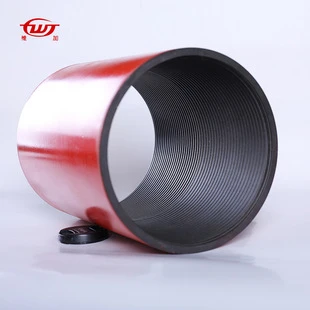- Afrikaans
- Albanian
- Amharic
- Arabic
- Armenian
- Azerbaijani
- Basque
- Belarusian
- Bengali
- Bosnian
- Bulgarian
- Catalan
- Cebuano
- Corsican
- Croatian
- Czech
- Danish
- Dutch
- English
- Esperanto
- Estonian
- Finnish
- French
- Frisian
- Galician
- Georgian
- German
- Greek
- Gujarati
- Haitian Creole
- hausa
- hawaiian
- Hebrew
- Hindi
- Miao
- Hungarian
- Icelandic
- igbo
- Indonesian
- irish
- Italian
- Japanese
- Javanese
- Kannada
- kazakh
- Khmer
- Rwandese
- Korean
- Kurdish
- Kyrgyz
- Lao
- Latin
- Latvian
- Lithuanian
- Luxembourgish
- Macedonian
- Malgashi
- Malay
- Malayalam
- Maltese
- Maori
- Marathi
- Mongolian
- Myanmar
- Nepali
- Norwegian
- Norwegian
- Occitan
- Pashto
- Persian
- Polish
- Portuguese
- Punjabi
- Romanian
- Russian
- Samoan
- Scottish Gaelic
- Serbian
- Sesotho
- Shona
- Sindhi
- Sinhala
- Slovak
- Slovenian
- Somali
- Spanish
- Sundanese
- Swahili
- Swedish
- Tagalog
- Tajik
- Tamil
- Tatar
- Telugu
- Thai
- Turkish
- Turkmen
- Ukrainian
- Urdu
- Uighur
- Uzbek
- Vietnamese
- Welsh
- Bantu
- Yiddish
- Yoruba
- Zulu
casing collar
Understanding Casing Collars in the Oil and Gas Industry
In the intricate world of oil and gas exploration and production, one critical component that plays a significant role in well construction is the casing collar. While it may seem like a minor piece of hardware, the casing collar is essential for ensuring the efficiency, safety, and longevity of oil and gas wells.
What is a Casing Collar?
A casing collar is a specialized component used in the construction of oil and gas wells. It is typically a ring-like structure that is integrated into the casing string, which is a series of pipes inserted into the borehole. The primary function of the casing itself is to provide structural integrity to the well, preventing it from collapsing while also isolating the various formations of rock and fluids encountered during drilling.
Casing collars serve several functions, including
1. Connection Points They provide the necessary interface for joining different sections of drilling casing together. This is crucial because wells often require multiple casing strings to accommodate varying depths and geological conditions.
2. Depth Marking Collars can also serve as markers to indicate specific depths within the wellbore, helping in the accurate identification of sections during drilling and completion operations.
3. Support for Equipment Casing collars can be utilized to support various tools and equipment during drilling and completion. For instance, they can anchor downhole tools or logging devices, facilitating effective monitoring and intervention.
4. Fluid Control Some collars are designed to facilitate the control of fluids entering or exiting the well. They can also act as points of isolation, preventing unwanted fluid migration between different formations.
Design and Manufacturing of Casing Collars
casing collar

Casing collars are manufactured using high-grade steel or alloys, designed to withstand the extreme conditions that exist underground. The drilling environment can subject these collars to high pressures, temperatures, and corrosive substances, making material selection and design crucial.
There are various designs of casing collars, including standard collars, threaded collars, and specialty collars designed for specific applications
. The choice of design depends on the well's requirements, the type of formation being drilled, and the intended function of the collar.Importance in Well Integrity
One of the central focuses of modern drilling operations is ensuring well integrity. Casing collars contribute to this objective by
- Preventing Well Failure By providing robust structural support, casing collars help prevent collapses or failures, reducing the risk of non-productive time and costly remedial operations. - Isolating Zones Properly installed casing collars ensure that different zones of the wellbore are isolated from one another, reducing the risk of crossflow and potential contamination of the hydrocarbon zones. - Facilitating Monitoring Collars allow for the installation of monitoring systems that can detect anomalies in pressure or fluid movement, providing essential data for the safe management of the well.
Future Trends
As technology advances in the oil and gas sector, the design and functionality of casing collars are likely to evolve. There is a growing trend towards integrating smart technologies into casing components. These innovations could allow for the real-time monitoring of well conditions and improve the overall safety and efficiency of drilling operations.
Additionally, with the increasing focus on sustainable and efficient resource extraction, casing collar designs may also adapt to reduce environmental impacts associated with well construction and operation.
Conclusion
In summary, casing collars may appear as simple components in the oil and gas drilling process, but their significance cannot be overstated. They play a vital role in maintaining well integrity, facilitating effective drilling and completion operations, and ensuring the safety of workers and the environment. As the industry continues to evolve, the importance of innovative casing collar designs will undeniably remain central to successful drilling practices. Understanding their role is essential for anyone involved in oil and gas production, highlighting the intricate interplay of engineering and geology in resource extraction.
-
Tubing Pup Joints: Essential Components for Oil and Gas OperationsNewsJul.10,2025
-
Pup Joints: Essential Components for Reliable Drilling OperationsNewsJul.10,2025
-
Pipe Couplings: Connecting Your World EfficientlyNewsJul.10,2025
-
Mastering Oilfield Operations with Quality Tubing and CasingNewsJul.10,2025
-
High-Quality Casing Couplings for Every NeedNewsJul.10,2025
-
Boost Your Drilling Efficiency with Premium Crossover Tools & Seating NipplesNewsJul.10,2025







